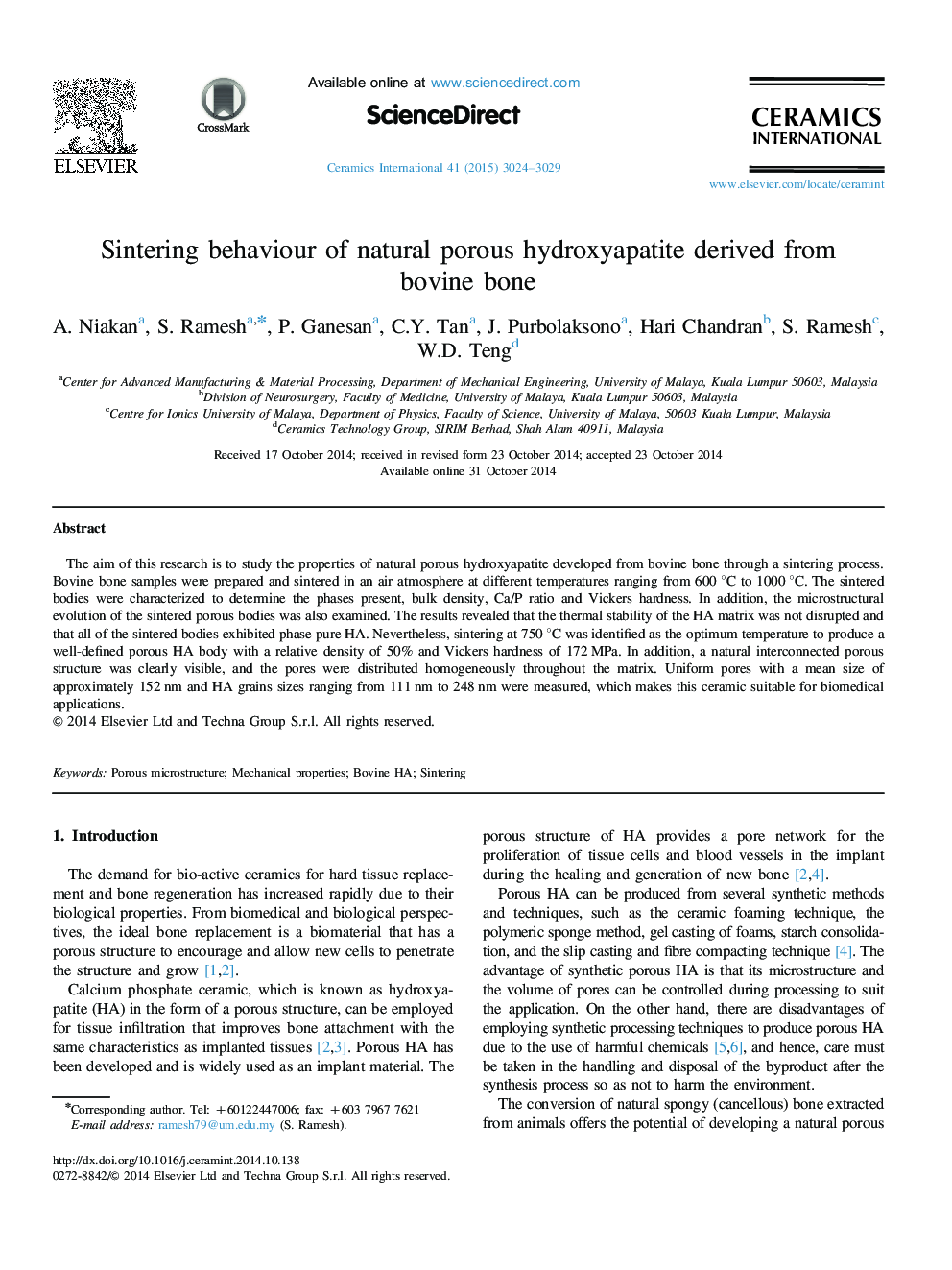| Article ID | Journal | Published Year | Pages | File Type |
|---|---|---|---|---|
| 1460624 | Ceramics International | 2015 | 6 Pages |
The aim of this research is to study the properties of natural porous hydroxyapatite developed from bovine bone through a sintering process. Bovine bone samples were prepared and sintered in an air atmosphere at different temperatures ranging from 600 °C to 1000 °C. The sintered bodies were characterized to determine the phases present, bulk density, Ca/P ratio and Vickers hardness. In addition, the microstructural evolution of the sintered porous bodies was also examined. The results revealed that the thermal stability of the HA matrix was not disrupted and that all of the sintered bodies exhibited phase pure HA. Nevertheless, sintering at 750 °C was identified as the optimum temperature to produce a well-defined porous HA body with a relative density of 50% and Vickers hardness of 172 MPa. In addition, a natural interconnected porous structure was clearly visible, and the pores were distributed homogeneously throughout the matrix. Uniform pores with a mean size of approximately 152 nm and HA grains sizes ranging from 111 nm to 248 nm were measured, which makes this ceramic suitable for biomedical applications.
